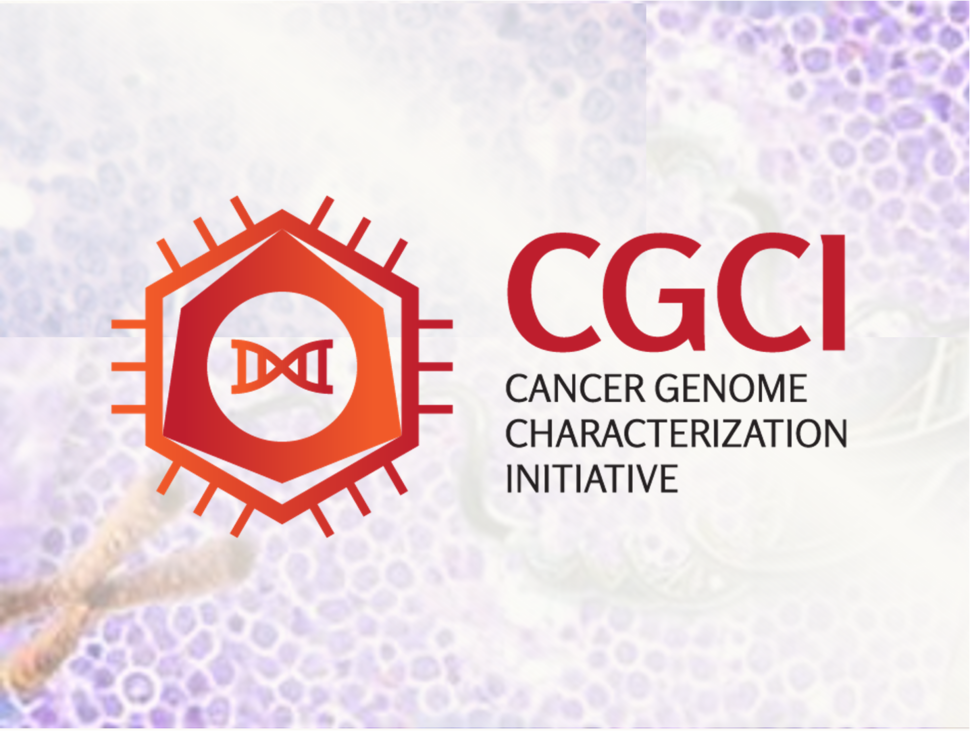Translating Genomics in Cancer: Interview with Dr. Andrew Mungall
, by Cindy Kyi, Ph.D.
Genome science and advances in sequencing technologies are leading the way towards precision oncology for cancer patients. OCG interviewed Dr. Andrew (Andy) Mungall, Senior Staff Scientist and Group Leader of Biospecimen and Library Cores at Canada’s Michael Smith Genome Sciences Centre of BC Cancer in Vancouver, Canada. Dr. Mungall has been involved with molecular characterization projects for OCG’s Cancer Genome Characterization Initiative (CGCI). Dr. Mungall provides his background and perspectives on genome science in cancer research.
When did your interest in genetics and genome science begin?
My undergraduate degree was in Applied Biological Sciences at a time when genetics was making significant progress in mapping genes such as those responsible for Huntington’s disease and cystic fibrosis. I spent a gap-year as a waiter in a small family-run restaurant in the French ski resort of Meribel. My downtime was spent skiing and reading French magazines and books describing the emergence of genomics in France and elsewhere. I was particularly taken by Bertrand Jordan’s book ‘Travelling around the human genome: A world tour of 80 laboratories’ and was certain I wanted to be part of the genomics revolution. In the summer of 1993, I began my career at the Sanger Centre (now Wellcome Trust Sanger Institute), near Cambridge, UK. I was first recruited as a sequence finisher working on the Huntington’s disease gene region (at 4p16.3) I’d studied a year earlier, as well as the red-green colour blind locus at Xq28. I subsequently led the team to map and sequence chromosome 6 as part of the International Human Genome Project. After publication of human chromosome 6 in 2003 (PMID: 14574404), I began my PhD studying the evolution and gene regulation of the genomic imprinting mechanism.
How did you get into cancer genomics research?
Numerous collaborations forged during the human chromosome 6 project stimulated my interest in applying genomics in healthcare and particularly cancer research.
What influenced your decision to move from Britain to Canada?
In 2007, as I was completing my PhD thesis, I began to look at genome centres closely associated with hospitals. One such environment was Canada’s Michael Smith Genome Sciences Centre (GSC), a department within BC Cancer. Under the directorship of Dr. Marco Marra, the GSC was one of the first worldwide research centres to develop and apply cutting-edge genomic technologies to cancer research. After visiting Marco and colleagues, some of whom I’d known from early Sanger days (including Drs. Steve Jones and Karen Novik), and spending a family holiday in beautiful Vancouver with its proximity to mountains and ocean, it was clear that my family would enjoy the professional and lifestyle opportunities.
How did you first get involved with NCI’s CGCI and what is your role in it?
My Staff Scientist role at the GSC first involved molecular characterizations of Non-Hodgkin lymphomas (NHL), using fingerprint profiling to identify structural rearrangements in follicular lymphomas (FL), then subsequently, massively parallel sequencing of FL and Diffuse Large B-Cell Lymphomas. Through this work, supported in part by CGCI, we published our findings of frequent EZH2 mutations in NHL in 2010 (PMID: 20081860). We then extended this work to identify that mutations in histone modifier genes are frequent in NHL (PMID: 21796119). These studies have launched new avenues of investigations into NHL biology and therapeutics. In 2011, I became the Group Leader for Library Core at the GSC, leading the team that generates diverse library types for CGCI and other projects. In 2019, our team completed the molecular characterization of pediatric Burkitt lymphomas through CGCI's Burkitt Lymphoma Genome Sequencing Project (PMID: 30617194). Finally, working with CGCI's HIV+ Tumor Molecular Characterization Project - cervical cancer working group, we have recently completed the genomic, transcriptomic and epigenomic characterization of Ugandan cervical tumours, surprisingly revealing human papillomavirus (HPV) clade-specific tumour differences.
Before you started the project, what was your expectation of HIV-associated mutations in cervical cancer?
HIV infection is well known to be associated with increased incidence of cancers, including cervical cancer (see CGCI’s HIV+ Tumor Molecular Characterization Project (HTMCP)). However, in cervical cancers, the interplay between HIV and HPV, a virus which is necessary but not sufficient for the development of cervical cancer, is unknown. One of the aims of the HTMCP cervical cancer project was to reveal whether molecular differences existed between HIV+ and HIV- patients with cervical cancer. Somewhat surprisingly, we did not identify significant molecular differences in the tumours of HIV+ and HIV- patients, although there was a trend towards PIK3CA mutations being more prevalent in HIV- cases (45%) than HIV+ cases (29%). HIV+ tumours may therefore be less reliant on dysregulation of the PI3K-MAPK pathway for cervical tumourigenesis. We observed that HIV+ cervical cancer patients were on average 10 years younger than HIV- patients, and therefore hypothesized that HIV infection may contribute to the early development of cervical cancer, potentially by suppressing immune recognition and clearance of HPV from the cervical epithelium.
Most notably, the cervical cancer study revealed the importance of epigenetic modifiers, with 87% of patients carrying mutations in one or more epigenetic modifiers such as KMT2D. Genome DNA methylation and histone modification data separated tumours according to HPV clade integrations in the tumour genome, with clade A9 HPV associating close to promoter regions and A7 in intergenic regions resulting in altered gene and endogenous retroviral expression programs.
What are some of the challenges in characterizing genomes from patient tumors?
Short-read sequencing technologies for re-sequencing applications is advanced and enables accurate somatic single nucleotide and insertion/deletion variant calling assuming constitutional DNA is available. A key challenge in tumour characterization is the uniform processing and timely collection of patient tumour and constitutional (often from blood) DNA samples. This can be difficult in rare tumour types sourced from around the world and can be overcome with detailed SOPs. Obtaining large fresh/flash frozen sample cohorts is not always possible for both prospective and retrospective cancer studies. It has, therefore, been important to develop the capability to characterize formalin-fixed and paraffin-embedded (FFPE) tissues typically collected for diagnostic purposes. At the GSC, we have developed methods for reducing FFPE artifacts in genome sequencing data (PMID: 30418619) while maintaining automated high throughput nucleic acid extraction (PMID: 28570594).
What are some of the “unknowns” or “gaps” that still need to be discovered in cancer genomics in order to fully understand pathogenesis in diverse tumor types?
The more we molecularly characterize tumour types, the more we appreciate the role of the epigenome in pathogenesis. This has been true for many of the CGCI projects mentioned above, including lymphomas and cervical cancer, and opens up possibilities for epigenetic therapies. Another promising area of cancer research is the relationship between tumour cells and their microenvironment, which is of particular importance in cancer immunotherapy as it has had spectacular success in some patients but not others. In the coming months and years, it will be critical to identify patients most likely to benefit from immunotherapy. I believe that tools including the organoid culture of tumour cells followed by single cell genome, transcriptome and epigenome analyses will play a significant role to further our understanding of tumour pathogenesis.
How can one apply results from ‘omics’ research in clinical research?
Omics technologies are powerful tools with which to perform discovery, and in time, with reducing costs, I expect genomes and transcriptomes (& more) to be featured prominently in clinical research. At the GSC, we have worked closely with multidisciplinary teams, using whole genome and transcriptome sequencing to inform on treatment decision-making in advanced stage cancers through BC Cancer’s Personalized OncoGenomics (POG) program (NCT02155621). More than 1100 patients have been enrolled thus far and the genomic data together with recorded treatment outcomes will continue to be mined by the scientific community for years to come. Genomic discoveries are already being used in the clinic through the use of targeted gene panels. At the GSC, we are accredited by the College of American Pathologists and Diagnostic Accreditation Program of British Columbia to provide clinical sequencing of genes in our Hereditary Cancer Program (HCP), Oncopanel and Myeloid panels. As omics research identifies new clinically actionable gene targets, these gene probes can be readily added to existing probe sets for custom capture sequencing.
What challenges lie in the way of achieving precision treatments for patients with diverse cancer subtypes?
Whole genome and transcriptome sequencing of tumours through programs such as CGCI and POG continue to provide invaluable information that can influence clinical patient management. Examples demonstrating personalized treatment options include gene expression signatures used to reclassify a tumour’s diagnosis and thus treatment, and drugs targeting the products of novel gene fusions identified across diverse tumour types, that are likely to benefit from immunotherapy. The challenge may therefore not lie solely in the detection of clinically actionable targets but rather how to prioritise the treatments. Drug availability, cost and off-label use are additional challenges that must be met before truly achieving precision medicine for cancer patients.

